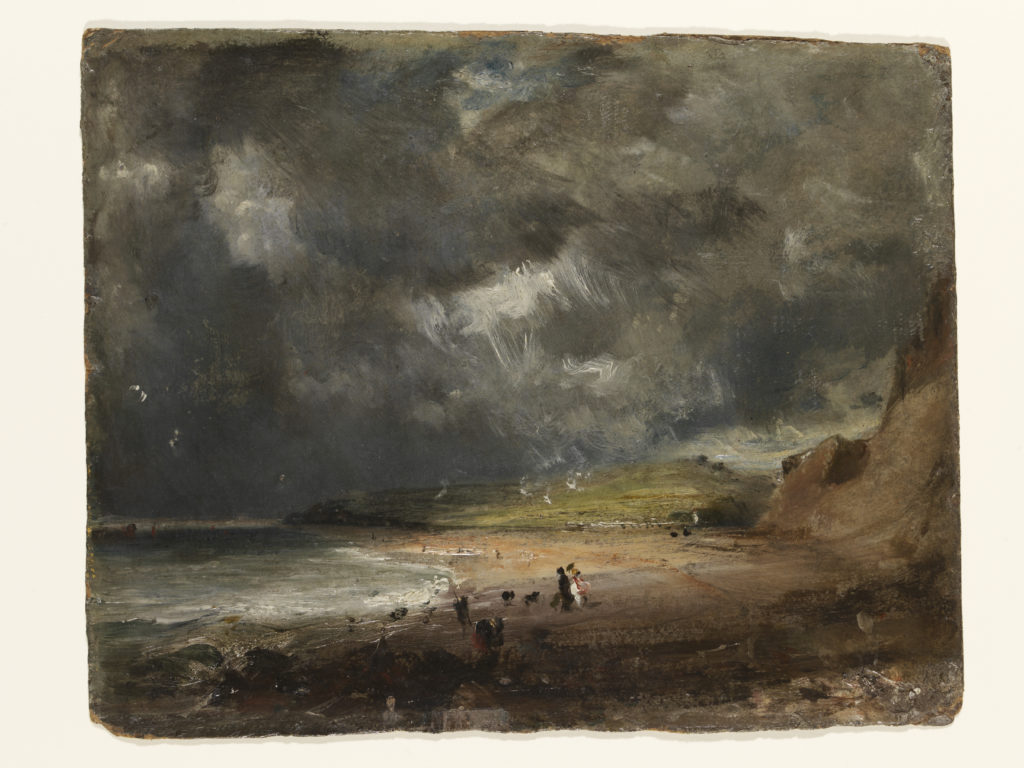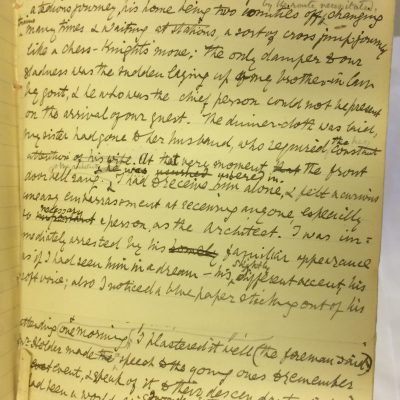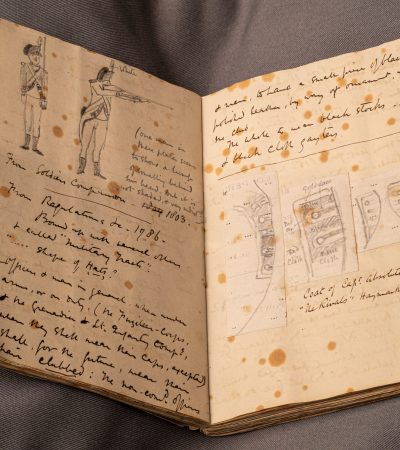Home » Our work » Exhibitions » Thomas Hardy exhibition » Hardy exhibition – Poole Museum
Experience the romance and excitement of the coastline which inspired Thomas Hardy’s writing. This exhibition explores the coastal themes in Hardy’s life – from first meeting his wife Emma on the wild cliffs of Cornwall, to his fascination with the Napoleonic wars.
See the difference between Hardy’s romanticised views of love and war in his early life, to his portrayal of the realities of both in his later writings.
On loan from: The Victoria and Albert Museum, London
An oil painting by Constable in 1816, Weymouth Bay depicts Weymouth Beach as it would have looked in the time of Hardy’s Napoleonic love story The Trumpet-Major. The eye is drawn to the central couple walking along the beach, whom we can imagine to be lovers in Hardy’s novels or John Constable and his wife on honeymoon.
In the exhibition, the painting will set the scene as visitors look at Hardy’s The Trumpet-Major research book as well as Napoleonic swords, epaulettes and a curious prisoner-of-war carved bone guillotine.
Our star loans were made possible by support from the Weston Loan Programme with Art Fund.

Hardy was a man conflicted. While he wanted to believe in the romance of love and war, objects like the letter telling him of his cousin’s death at Gallipoli and malicious gossip written about his first marriage show that romance and reality were often different.


For details of opening times, admission prices, facilities, directions, etc, please visit Poole Museum’s website.
Our star loans were made possible by support from the Weston Loan Programme with Art Fund.
| Cookie | Duration | Description |
|---|---|---|
| cookielawinfo-checkbox-analytics | 11 months | This cookie is set by GDPR Cookie Consent plugin. The cookie is used to store the user consent for the cookies in the category "Analytics". |
| cookielawinfo-checkbox-functional | 11 months | The cookie is set by GDPR cookie consent to record the user consent for the cookies in the category "Functional". |
| cookielawinfo-checkbox-necessary | 11 months | This cookie is set by GDPR Cookie Consent plugin. The cookies is used to store the user consent for the cookies in the category "Necessary". |
| cookielawinfo-checkbox-others | 11 months | This cookie is set by GDPR Cookie Consent plugin. The cookie is used to store the user consent for the cookies in the category "Other. |
| cookielawinfo-checkbox-performance | 11 months | This cookie is set by GDPR Cookie Consent plugin. The cookie is used to store the user consent for the cookies in the category "Performance". |
| viewed_cookie_policy | 11 months | The cookie is set by the GDPR Cookie Consent plugin and is used to store whether or not user has consented to the use of cookies. It does not store any personal data. |

Males great bustards perform spectacular courtship displays, gathering at a ‘lek’ or small display ground to try to impress the females.
The great bustard has a dignified slow walk but tends to run when disturbed, rather than fly.
The hen-bird on display at The Salisbury Museum was one of the last great bustards to be eaten in the town!